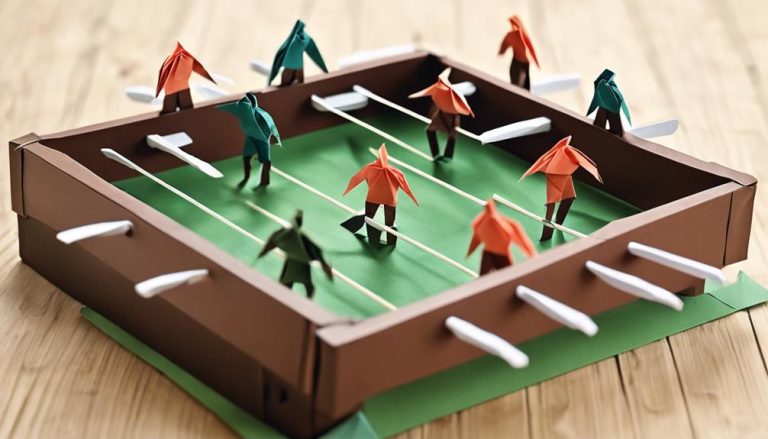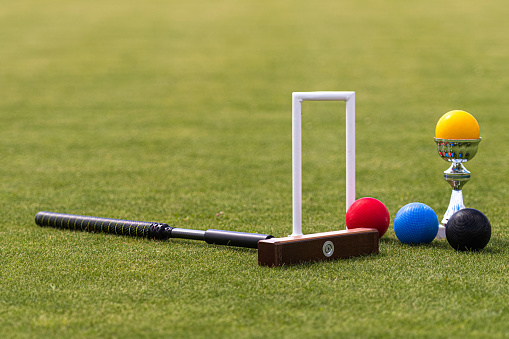General Rules of Flag Football
You're about to tackle the world of flag football, where speed, agility, and strategy come together in a heart-pumping game. To get started, you'll need to know the general rules. The game is played on a 30-40 yard wide, 70-80 yard long field with clear markings, including end zones and sidelines. Each game is divided into four 15-minute quarters, with a 30-second play clock and strategic timeouts. You'll need to understand flag removal, passing, and rushing rules, as well as penalties like holding and unsportsmanlike conduct. As you master these basics, you'll be ready to take your game to the next level – and there's much more to explore.
Game Objective and Scoring
Your goal in flag football is to score more points than the opposing team by carrying or throwing the ball into the end zone of the opponent's field. To achieve this, you'll need to develop a winning mindset and focus on effective scoring strategies. A strong offense is key, so prioritize ball control and precision passing to gain yardage and get your team in scoring position. Don't underestimate the importance of defense, though – a solid defensive line can shut down the opponent's offense and create turnovers that give your team scoring opportunities. Remember, every play counts, and a single mistake can cost you the game. Stay focused, communicate with your teammates, and adapt to the game's momentum to outmaneuver your opponents. By mastering these scoring strategies and maintaining a winning mindset, you'll be well on your way to triumphing over the opposing team and emerging victorious.
Field and Equipment Rules
Before you take the field, it's crucial to understand the layout and equipment you'll be working with. You'll be playing on a rectangular field with specific dimensions and markings, designed to facilitate a fun and safe game. You'll also be using official game balls that meet specific standards, so let's take a closer look at these critical components of flag football.
Field Dimensions
Measuring 30-40 yards in width and 70-80 yards in length, a standard flag football field provides ample space for you to showcase your skills. When it comes to field layouts, you'll want to take into account the following boundary considerations:
- End zones: Make sure they're 5-10 yards deep to provide a safe area for players to catch passes and avoid collisions.
- Sidelines: Be sure they're clearly marked and at least 5 feet wide to give players enough room to move.
- Goal lines: Position them at the front of each end zone, marked clearly to avoid confusion.
Field Markings
When setting up a flag football field, you'll need to incorporate several essential markings to guarantee a safe and organized game. The first step is to define the playing area with clear boundary lines, including sidelines, goal lines, and end zones. These markings will help prevent boundary disputes and make sure players know exactly where they are on the field. Additionally, you'll need to mark the center of the field, the 5-yard lines, and the 10-yard lines. Make sure to use high-visibility paint or tape that can withstand heavy use and turf maintenance. It's also important to mark the flag zones, where players will remove flags during gameplay. Proper field markings will not only improve game flow but also reduce confusion and disagreements among players. By investing time in setting up a well-marked field, you'll create a fun and fair environment for all players.
Game Balls
You'll need a minimum of two game balls that meet specific standards to guarantee fair play and player safety. The balls should be made of suitable Ball Materials, such as leather or synthetic materials, to ensure durability and grip.
When it comes to ball inflation, the pressure should be between 12.5 and 13.5 pounds per square inch (PSI). This is important to maintain consistent ball performance and prevent injuries.
Here are some key requirements for game balls:
- Size: The ball should be a prolate spheroid shape, with a length of 11 inches and a circumference of 22 inches at the midpoint.
- Weight: The ball should weigh between 14 and 15 ounces.
- Air Pressure: The ball should be inflated to a pressure of 12.5 to 13.5 PSI.
Player Roles and Responsibilities
Flag football teams rely on each other's unique skills, with players assuming specific roles and responsibilities that contribute to the team's overall success. As a player, you'll need to understand your role in the team's dynamics. The quarterback is usually the team's leader, responsible for calling plays and executing Quarterback dynamics. They're the ones who'll be reading the defense and making split-second decisions to get the ball to their teammates.
On the defensive side, you'll be working together to execute a solid Defensive strategy. This might involve setting up formations, anticipating the opposing team's moves, and making tackles. You might be a rusher, a defender, or a safety – each role is crucial to stopping the opposing team's offense. Remember, communication is key. You'll need to work together, relying on each other's strengths and covering each other's weaknesses. By understanding your role and working together, you'll be well on your way to flag football success.
Game Length and Timing
As you step onto the field, understand that a standard game of flag football typically lasts around 60 minutes, divided into four quarters of 15 minutes each. This time frame allows for a fast-paced, action-packed game that demands strategic thinking and quick decision-making.
To optimize your gameplay, mastering clock management and timeout strategies is crucial. Here are three key takeaways to keep in mind:
- Manage your timeouts wisely: Use your timeouts strategically to stop the clock, regroup, and adjust your strategy. Don't waste them on trivial matters!
- Keep an eye on the clock: Monitor the game clock to make sure you're not leaving valuable time on the table. Make the most of every second to maximize scoring opportunities.
- Stay flexible: Be prepared to adapt your strategy as the game unfolds. Adjust your pace, formations, and plays to outmaneuver your opponents and stay ahead of the clock.
Starting and Stopping Play
In the heat of competition, knowing when to start and stop play is essential, and it's important that you understand the rules governing these critical moments. A game of flag football is divided into plays, and each play has a limited time frame. You'll have 30 seconds to start the next play after the previous one is over, and the Play Clock will keep you on track. If you're not ready to snap the ball when the Play Clock expires, the referee can call a delay of game penalty.
When the referee blows their Official Whistle, play is stopped. This can happen for various reasons, such as a foul, a timeout, or the end of a quarter. When you hear the whistle, you should immediately stop playing and wait for the referee's instructions. Remember, the referee's decisions are final, so it's important to respect their calls. By understanding when to start and stop play, you'll be able to focus on the game and make the most of your time on the field.
Flag Removal and Downs
Learning the rules of flag football, understanding how flag removal and downs work together is crucial. You'll need to know when a player is considered down and how to signal it to the refs, as well as the procedures for removing flags during a play. Mastering these rules will help you navigate the game with confidence and clarity.
Flag Removal Rules
You'll be considered down and the play will be whistled dead as soon as a flag is removed from your belt, or if you've had possession of the ball and a defender has removed one of your flags. This is a vital aspect of flag football, as it determines when a play is over.
Here are some key points to keep in mind:
- Flag Grabs: If a defender grabs your flag but doesn't remove it, the play continues. However, if they're holding onto your flag, you can't advance the ball.
- Referee Discretion: If a referee sees a flag has been removed, they can whistle the play dead even if they didn't see the exact moment it was removed.
- Immediate Whistle: If a defender removes a flag, the play is stopped immediately, regardless of whether you're still holding the ball or not.
Downed Player Signals
When a flag's removed, you're considered down, and now it's time to explore how to signal to officials that you're down, guaranteeing a smooth game flow. As a player, it's crucial to communicate effectively with referees to avoid confusion and ensure player safety.
When you're down, immediately stop playing and raise your arms above your head, signaling to the referee that you're out of the play. This clear communication helps the referee make accurate calls, preventing unnecessary delays or disputes. Remember, referee communication is key to a smooth game flow. By signaling your downed status, you're not only following the rules but also prioritizing player safety.
Don't forget, if you're unsure about a call or have questions, politely address the referee during a stoppage in play. Open communication and respect for the referees will maintain a positive and enjoyable game environment. By following these simple guidelines, you'll contribute to a safe, respectful, and enjoyable game for all players involved.
Passing and Receiving Rules
Understanding the rules governing passing and receiving in flag football is essential, as you're likely to throw or catch a pass on nearly every play. As a player, you want to maximize your chances of success, and that starts with a solid grasp of these fundamental skills.
Here are three key things to keep in mind when it comes to passing and receiving:
- Quarterback Vision: As a quarterback, your ability to read the defense and identify open receivers is vital. You need to have the vision to spot openings and deliver the ball to your teammates in stride.
- Catch Radius: As a receiver, your catch radius is the area around your body where you can reasonably catch a pass. The bigger your catch radius, the more chances you'll have to make a play on the ball.
- Leading Your Receiver: When throwing a pass, aim to lead your receiver to the spot where they'll be open. This requires anticipation and trust in your teammate's ability to get to the right spot.
Rushing and Blocking Rules
Now that you've mastered the art of passing and receiving, it's time to focus on moving the ball on the ground, where rushing and blocking become key components of your team's offensive strategy. As you develop your rushing strategies, remember to identify defensive weaknesses and exploit them with speed, agility, and quick decision-making. Look for opportunities to break through tackles and gain extra yards.
When it comes to blocking, mastering various blocking techniques is essential. You'll need to learn how to effectively block for your teammates, creating holes for them to run through and protecting them from defenders. Focus on using your body to shield opponents and create space for your teammates to advance. Remember to stay low and balanced, using your legs to generate power and drive your blocks. By combining effective rushing strategies with solid blocking techniques, you'll be unstoppable on the field.
Penalties and Infractions
You'll need to familiarize yourself with common penalties and infractions to avoid costly mistakes that can turn the tide of the game against your team. In flag football, penalties can be game-changers, and understanding what constitutes a foul can make all the difference.
Here are three key penalties to watch out for:
- Holding: Grabbing onto another player's flag or jersey to prevent them from making a play is a major no-no. This can result in a 5-yard penalty and an automatic first down.
- Unsportsmanlike Conduct: Any behavior deemed unsportsmanlike, such as arguing with referees or using abusive language, can result in a 10-yard penalty and even ejection from the game.
- Illegal Advantage: Gaining an unfair advantage through means such as pushing or blocking opponents can lead to a 5-yard penalty and a loss of down.
Frequently Asked Questions
Can Players Wear Jewelry During a Flag Football Game?
"Don't even think about it! You can't wear jewelry during a game, it's a safety hazard! Uniform guidelines are clear: no bling, no baubles, no risks. Jewelry safety comes first, so leave it in the locker room, champ!"
Are Verbal Warnings Given Before Penalties Are Called?
You'll find that, typically, verbal warnings aren't given before penalties are called, as referees use their discretion during the Warning Process, ensuring a smooth game flow and maintaining a safe, respectful environment for all players.
Can Coaches Dispute Referee Calls During a Game?
As you stand on the sidelines, the referee's whistle pierces the air. Remember, you can't dispute their calls during the game – it's about Referee Respect and Game Etiquette. Keep calm, focus on the next play, and let the officials do their job.
Are Injured Players Allowed to Re-Enter a Game?
"When you're injured, don't worry, you can re-enter the game after an injury timeout. If you need a game stoppage to tend to your injury, you'll be allowed back in once cleared by the referee, no problem!"
Do Referees Review Plays to Determine Penalties?
As you step onto the field, imagine a referee's eagle eye scanning the play, and you wonder: do they review plays to determine penalties? Yes, they do, using Instant Replay and Video Evidence to guarantee fair calls, liberating the game from controversy.






